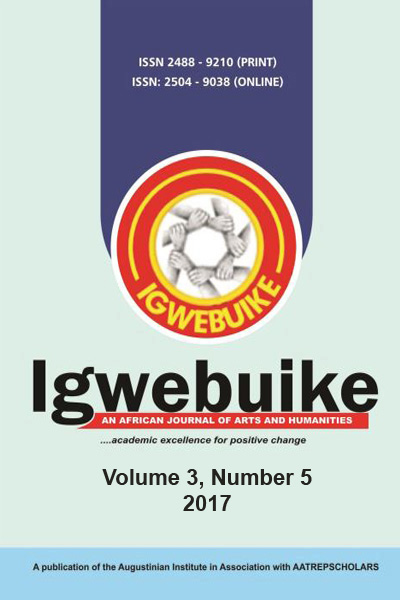JUNCTURE IN SPEECH: ILLUSTRATIONS FROM THE NNEWI DIALECT OF IGBO
Abstract
Juncture is a phonetic feature which contributes greatly in expression and meaning in speech. This phonetic feature can broadly be divided into two: the segmental and the nonsegmental juncture. Although the non-segmental appears more obvious in speech, the segmental juncture contributes in no small measure in communication and in enriching language. More importantly, it provides very good atmosphere for speech planning and execution. This aspect of segmental juncture is otherwise called filled pause. They include different sounds, hesitations, parenthetical remarks, repetitions and the like which speakers employ in their speeches. They usually come into speech unconsciously although some speakers introduce them deliberately. Unfortunately, these forms of juncture have been receiving very poor attention in language studies and analysis and this has made many people to be ignorant of their importance and function in speech. Also, some teachers, journalists and others apparently but ignorantly disregard them. This study therefore strives to project these forms of juncture and their importance in communication, with illustrations from the Nnewi dialect of Igbo language. Some native speakers of Nnewi dialect were interviewed and their speech excerpts were collected as raw data for illustration and analysis. The Expressive function approach of the Functional Phonological theory of André Martinet was adopted for the execution of the study. In the end, it was discovered that filled pauses, otherwise called pausing are very necessary ingredients for planning and execution of speech. They also help to elevate speech, nay language/dialect. The study is therefore found quite relevant to linguistic scholars, language teachers and analysts, journalists and all literate public.


